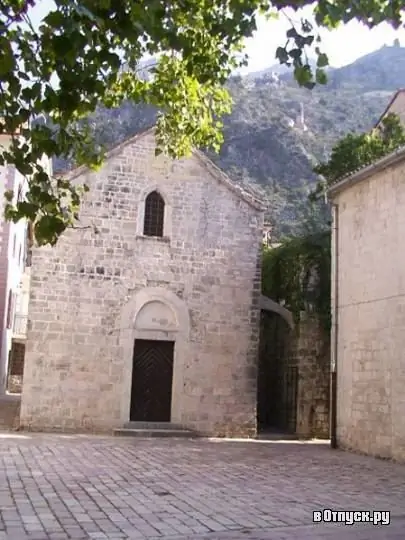
Description of the attraction
In the city of Kotor, in its central part, there is the Church of St. Michael. Directly opposite it is the former monastery of Our Lady of the Angel.
The first mention of the temple dates back to 1166. It was then that the consecration of the Cathedral took place in the presence of the Abbot of St. Michael of Kotor, Petar, and the church itself was an integral part of the abbey.
It has not survived in its original form, but judging by the archaeological excavations, it was much larger than the present one. Among the found parts of the building, well-preserved relief elements and the main plan of the building often came across. According to scientists who have studied the discovered, the beginning of the construction of the church building can be attributed to the 11th century.
The current church is a small structure with one nave, a semicircular apse, topped with a pointed vault, which looks more powerful thanks to the arches that reinforce it. By all indications, this building began to be built in the late 14th - early 15th centuries.
Four compartments form the core of the structure. Looking around the interior of the temple, you can find some of the surviving elements of the frescoes. Fragments of painting are especially noticeable on the north wall. It is an ancient architectural layer on which the figures of saints, more precisely, their lower parts, are visible. Having studied the stylistic features of the frescoes, the researchers came to the conclusion that the surviving fragments date back to the 11th century.
On the east wall, including the apse, frescoes are visible, which appeared during the construction of the present building. In addition to all sorts of decorative details, one can distinguish here in the apse of the Deesis, on the triumphal arch - the Annunciation, images of other saints at the bottom of the wall and even St. Tryphon, in whose hand a model of the city of Kotor. Scientists attribute all these fragments to the beginning of the 15th century.
Outside the building, there were once bas-reliefs with inscriptions and various images, which were eventually replaced by copies so that their originals could be preserved for a longer time, being in the building of the church itself.






